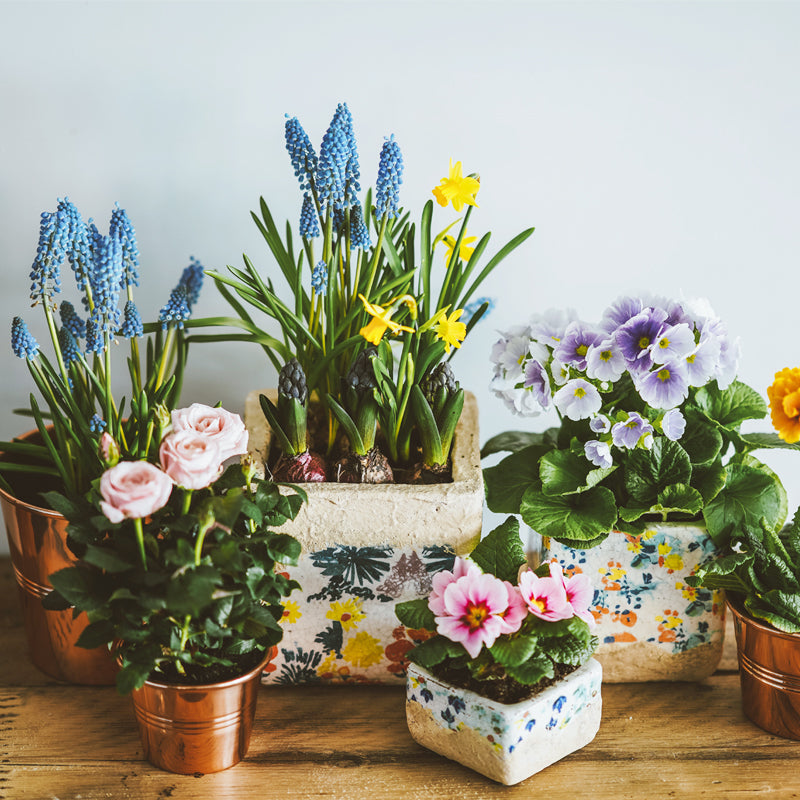
Indoor Plants That Help with Asthma and Improve Indoor Air Quality (Part 1)
Share

We can’t ignore the fact that the air quality we have in our cities over the world is being compromised. With recent news and the statistics of a growing number of people developing asthma and other respiratory illnesses- even death caused by unclean air, is a testament that we’ve polluted our air enough that we need to do something about it.
To give a brief background, in the UK, there is a 25% growth in the numbers of death due to asthma caused by air pollution crisis in England and Wales. The Office for National Statistics (ONS) found that there are 1,320 people who died in 2017 and an increase of 43% in asthma deaths in people aged 55-64, since 2016.
In the US, an article from the American Lung Association reported that 20.4 million American adults had asthma. It’s currently affecting an estimated 6.1 million children under 18 years old and 3.5 million suffered from asthma attacks in 2016.
Asthma is a chronic lung disease that makes it harder to move air in and out of your lungs. Exposure to certain asthma triggers can cause asthma flare-ups and these attacks can be life-threatening if not managed properly.
Stimulants or “triggers” are found in the unclean air such as pollen, dust mites, mold, and other airborne particles. Another source of triggers is air pollution- caused by factories, vehicles, coal mines, cigarettes smoking, and so on.
All these factors affect the air quality including indoor air. Whether it’s in our office, malls, and our homes. We all know that low-quality indoor air can make asthma worse but don’t lose hope- our aide is not too far away.
In the past week, we featured the Best Indoor Plants for Asthma, Allergy, and Air Pollution on our Instagram page and we decided to turn it into a blog, in an attempt to make it more comprehensive. So without further ado, here are the best indoor plants that can purify our air and help asthma and allergy sufferers.
Areca Palm

Pros: –
Ranked highly on NASA’s list for its ability to remove formaldehyde, xylene, carbon monoxide, and toluene from the air. It can also humidify a room in certain weather because it actively transpires moisture from its leaves.
Yes, you heard that right, it’s the same NASA that wants to build a future in Mars. In 1989, NASA collaborated with the Associated Landscape Contractors of America and presented a two-year study called “The Clean Air Study.” Seems odd right? Well, it is, but NASA is researching ways to keep air clean while in a mission in the international space station. The study was intended for “space” but was accepted for home use.
Back to the Areca Palm, it requires medium lighting and can grow tall, about 6-10 inches per year until it reaches a mature state of 6 or 7 feet tall. A mature palm can transpire or moisten the air for up to 1 liter of water per day, and that can make it easier for people living with asthma to breathe.
This plant can tolerate trimming and will last for 10 years and only requires re-potting every 2-3 years.
Cons: –
Full grown Areca Palm can be expensive (around $28+ on Amazon) but it’s available for purchase at its younger stage, and it is a lot cheaper, but you might need to visit your local garden nursery.
It needs to be watered often to keep the soil moist, but too much water can damage or kill the plant -so allow the soil to dry slightly in between watering.
Peace Lilies (closet plants)

Pros: –
According to NASA, this plant can improve indoor air quality by 60%. It neutralizes benzene, formaldehyde, and carbon monoxide. They’re very popular in most US homes because it is very decorative and only grows to 3 feet tall. It’s the easiest to care for but still requires your attention. If you want your Peace Lilies to produce a bright flower, you need to put it in an area with low to medium light as it won’t grow any flowers if it is in a low lit place in your house. Too much water can kill the plant, so there is no need to schedule when to water it. Just check it once a week and see if the topsoil is dry. If it’s still moist, then there’s no need to water it.
Cons: –
Peace Lilies have wide leaves and can be a dust magnet, so you need to wipe it often to maximize that improved air quality. It’s also known as toxic to cats and dogs so if you have pets; you might need to reconsider buying this plant.
